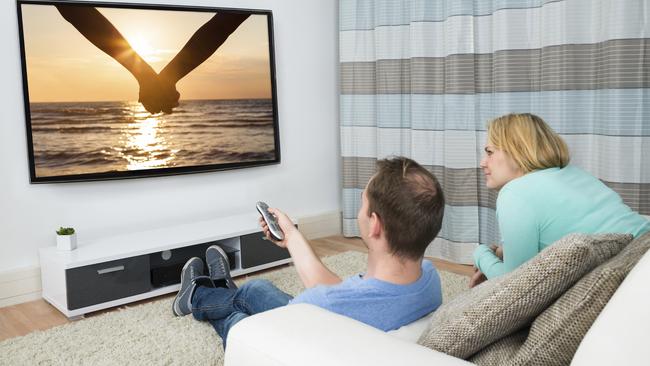Save money on electricity by focusing on thirstiest appliances
Not all household appliances are equal when it comes to energy consumption, and these ones are likely to be driving up your power bill the most.
SmartDaily
Don't miss out on the headlines from SmartDaily. Followed categories will be added to My News.
Not all household appliances are equal when it comes to guzzling electricity and pushing power bills painfully high.
Take heating and cooling, for example. A ceiling fan costs 2c an hour to run, a reverse-cycle airconditioner can cost up to $1 an hour depending on room size, while a ducted whole-house system is “the biggest money pit” and can cost up to $3.50 an hour, according to Canstar Blue’s number crunching.
Understanding which appliances are the thirstiest in your home is the biggest step in reducing energy use and costs, says Canstar Blue spokesman Simon Downes.
“Consider that every time you run the washing machine, clothes dryer and dishwasher, this is costing you money,” he says.
“So, try not to use these appliances until you have a full load, or use any economical settings on them to get a quick wash instead of intensive if possible.”
Here five big energy guzzlers and how to control their costs.
1. AIRCONDITIONERS
“Try to avoid cooling or heating usage until you really need it – and when you do, make sensible decisions around the temperature you set it to,” says Downes.
“It’s all about comfort versus cost and how much you are willing to pay for comfort. Setting the aircon to 24 in summer is probably the most economical option for being comfortable while keeping costs under control.”
Energy experts say during winter a thermostat temperature of 18-20 degrees should do the job, and every degree higher adds 10 per cent to the running cost.

2. FRIDGES
Your fridge is one of the few appliances that runs all day, every day, and a 500-litre model will typically cost just over $100 a year to operate.
But many people double and triple that amount by owning second and third fridges that are often older and less energy efficient.
“There is really no justification for second fridges when they are only used to stock a couple of beers and leftover food you’re never going to eat,” Downes says.
“As appliances that run 24/7, you are quite literally burning money by running a second fridge unnecessarily.
3. ELECTRIC OVENS
An electric oven running seven hours a week can cost almost $200 a year, and a good trick when the cooler weather arrives is to leave your oven door open after it’s turned off – adding some handy heat to your kitchen.
Keeping clothes clean costs a similar amount. A washing machine running seven loads a week adds up to about $80 annually, while a clothes dryer operated three times a week can cost $150.
4. TELEVISIONS
One 50-inch LED television may only cost $65 a year to run, but most households have bigger screens, many screens plus computer monitors and other forms of entertainment.
CompareClub CEO Andrew Davis says most homes operate multiple types of the same appliance at the same time.
“Televisions and all the extra bits and bobs of your home entertainment system are also generally used during on-peak times when energy can be charged at a high point,” he says.
“The easiest way to reduce household energy bills is to compare energy offers regularly. This can save more than $200 a year.”

5. STANDBY POWER
Leaving all appliances turned on at the wall can increase your electricity bill more than 10 per cent, and Clipsal by Schneider Electric’s Vineet Chaudhary says this consumption should be reduced.
“Sometimes people are not aware that their TV, home theatre and other appliances are consuming power even when they have turned off the device using the remote,” he says.
“It’s a great idea for consumers to look into handy apps and devices … to help control and track this excess energy and costs.”
BILL SHOCK
Jen Blackmore and husband Tim had twin daughters during last year’s April lockdown and were shocked to find their energy bill quadrupled as they ran a heater 24-7 to help keep their babies warm.
“After getting slugged with the massive energy bill, we’ve definitely been more conscious about running the heating or airconditioning, and probably relied on pedestal fans more this summer as they’re cheaper to run,” she says.
“We’re also planning to get solar panels installed next financial year, when we can access all the great state and federal government rebates.”
CUT YOUR ENERGY BILL
• Only heat or cool rooms where you spend the most time, and shut doors.
• Turn appliances off at the power point.
• Install sensor lighting that turns off when people leave rooms.
• Review your energy provider and compare prices.
• Make sure your curtains and blinds seal.
Source: Compare Club, Clipsal by Schneider Electric





